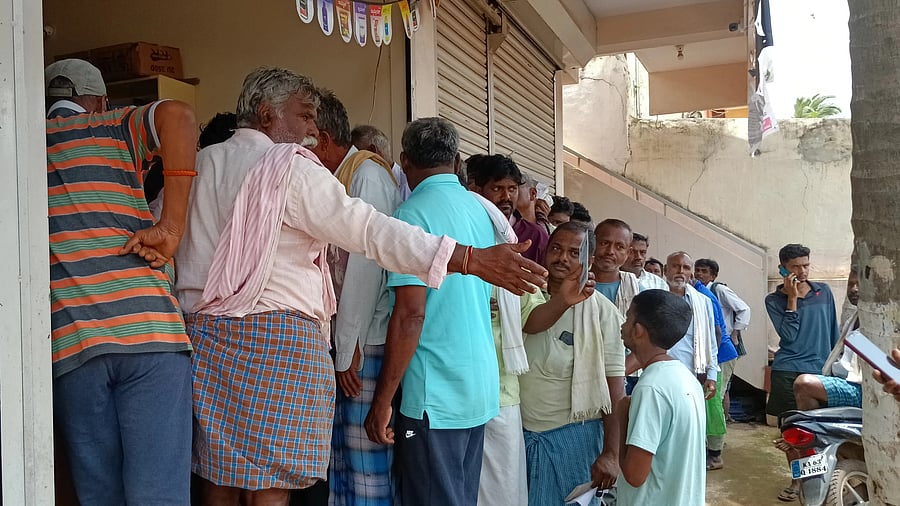
Farmers stand in a queue in front of a fertiliser shop in Kundgol taluk of Dharwad district for procuring urea.
DH FILE PHOTO
Dharwad: Unexpected heavy rains coupled with expansion of area under maize cultivation has resulted in urea shortage during kharif season this year. The change in Centre’s policy on supply of the fertiliser added to the woes. Karnataka is facing urea shortage in kharif season for the first time in recent years.
Typically, the agriculture department anticipates cropping patterns and submits fertiliser indents well in advance, ensuring timely supply before the sowing season begins.
Agriculture department joint director Manjunath Antharvalli told DH that the area under maize cultivation had expanded by over 2 lakh hectares this season. “Since maize requires substantial urea, sudden increase in acreage led to a sharp surge in demand,” he said.
“With fields still moist due to ongoing rainfall, farmers fear crop damage if adequate fertiliser is not provided. While the department recommends one 50-kg urea bag per acre, many farmers are using three to four bags to safeguard their crops,” he said.
Despite efforts by the department to promote alternatives like nano-fertilisers, farmers are adamant about their demand for urea.
Agriculture officials said green gram was initially the most preferred crop, with a target of over six to seven lakh hectares.
Benefiting from an early monsoon, farmers had begun sowing in the last week of May. However, torrential rains between June 11 and 14 destroyed many green gram fields, prompting resowing in over 20 taluks.
As a second crop, many farmers shifted to maize, a fertiliser-intensive crop, further adding to urea demand.
Over the past week, several taluks, especially in northern and central Karnataka, witnessed widespread protests by farmers demanding urgent supply of urea.
In taluks like Kalghatagi, Kundgol, Bagalkot, Gadag, Nargund, Holalkere, Chitradurga, and Navalgund, farmers attempted to picket Raitha Samparka Kendras, warning of intensified protests if the government fails to meet the demand.
Agriculture Minister N Chaluvarayaswamy acknowledged the crisis and cited changes in the union government’s fertiliser allocation policy as a major factor. Over the last three years, fertilisers, including urea, were supplied based solely on demand. However, this year, the Centre considered existing opening stock in its allocation, reducing the total quantity supplied to state.
“For this kharif season, the state sought 12.95 lakh metric tonnes (MT) of urea, but the Centre approved only 11.17 lakh MT,” he said.
He said the department had written six letters since April to the Union Ministry of Chemicals and Fertilisers, urging adequate supply of urea.
Early water release
“Early release of water from major reservoirs like Tungabhadra, Krishna and Cauvery to command areas advanced transplanting activities, intensifying fertiliser needs,” he said.
The minister appealed to the Centre to urgently supply the remaining 1.45 lakh MT of urea without adjusting opening stock.